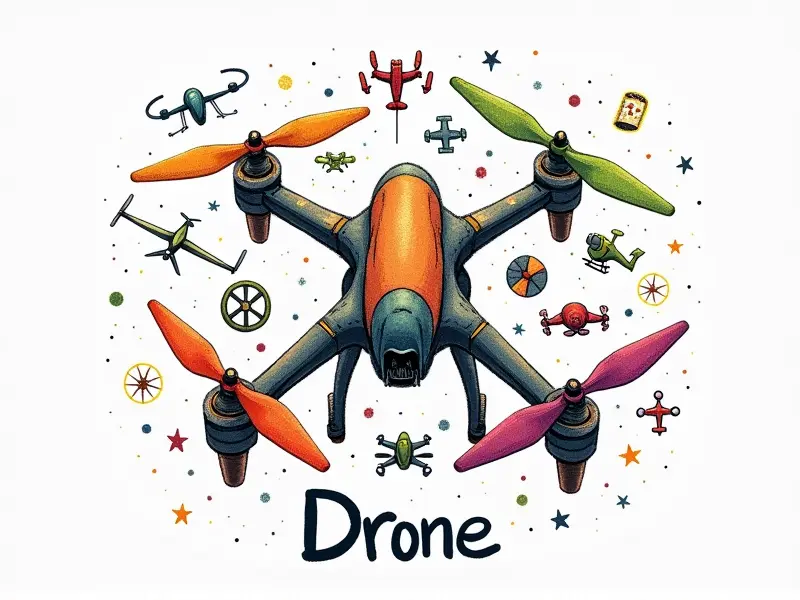What's VTX power in FPV?

Understanding VTX Power in FPV Racing
In the world of first-person view (FPV) racing drones, one crucial aspect that can significantly impact performance is the power output of your video transmitter (VTX). The right VTX power level not only ensures clear and stable signals but also maximizes range. This article delves into the nuances of VTX power settings to help you optimize your FPV setup for peak performance.
Understanding VTX Power in FPV
The video transmitter (VTX) is a critical component in an FPV racing drone system, responsible for transmitting live video feed from the camera on the drone to goggles or monitors used by pilots. The power output of the VTX determines how far and clearly this signal can be transmitted.
Choosing the Right VTX Power Level
Selecting the appropriate VTX power level is essential for balancing range, clarity, and legality. Higher power settings offer better range but may cause interference with other pilots in crowded airspace. Conversely, lower power levels provide clearer signals within a shorter distance.
Legal Considerations
- FCC Regulations: In the United States, VTX power must not exceed 250mW (14dBm) for unlicensed use in the 5.8GHz band to comply with FCC regulations.
- Local Laws: Check local laws and regulations as they may vary by country or region.
Optimal VTX Power for Clear FPV Signals
The ideal VTX power setting depends on your specific flying conditions. In less crowded areas, you can use higher power settings without interference issues, ensuring clear signals over longer distances.
Tuning Your Setup
- Adjust for Clarity: Start with a lower power level and gradually increase until the signal becomes clear but not overpowering.
- Avoid Overpowering: High power can cause interference, leading to static or dropped signals in crowded airspace.
Boosting Range with VTX Power Adjustments
To extend your range, you may need to experiment with different power settings. However, always balance this against the risk of signal degradation and legal constraints.
Tips for Enhancing Range
- Antenna Selection: Use directional antennas instead of omnidirectional ones for longer-range flights.
- Flight Position: Ensure your drone is flying in a position that maximizes line-of-sight with the receiver.
Maximizing Your VTX Power Output
Finding the sweet spot between power output and signal quality requires careful calibration. Use tools like spectrum analyzers to monitor interference levels and adjust accordingly.
Optimal Settings
- Monitor Interference: Regularly check for other signals in your frequency band using a spectrum analyzer.
- Avoid Overpowering: Increase power incrementally to avoid interference with neighboring pilots.
The Impact of VTX Power on FPV Quality
The quality of your FPV signal directly affects your ability to navigate and control the drone effectively. A clear, stable signal ensures smoother flights and better racing performance.
Signal Degradation
- Interference: High power can lead to interference from other devices or drones in close proximity.
- Range Limitations: Lower power settings may restrict your range, making it difficult to fly over long distances.
VTX Power Explained: What You Need to Know
To fully understand VTX power and its impact on FPV performance, it's crucial to grasp the technical aspects involved. This includes understanding frequencies, modulation types, and how they interact with your environment.
Fundamentals
- Frequency Band: The 5.8GHz band is commonly used for FPV due to its wide bandwidth and lower interference levels compared to other bands.
- Modulation Type: Common modulation types like OFDM provide better signal integrity in challenging environments.
Optimizing VTX Power for Distance
To maximize your range, consider the following strategies:
Tuning Techniques
- Power Incremental Adjustments: Gradually increase power to find the optimal balance between distance and signal clarity.
- Fly in Open Areas: Choose open areas with minimal obstructions for better line-of-sight communication.
Common Mistakes in Setting VTX Power
Misconfiguring your VTX power can lead to poor performance and legal issues. Here are some common mistakes to avoid:
Avoid These Errors
- Ignoring Legal Limits: Ensure you comply with FCC regulations to avoid penalties.
- Flying in Crowded Spaces: Avoid high-power settings in crowded areas where interference is common.
How Much Power Does Your VTX Need?
The amount of power your VTX needs depends on several factors including flying environment, distance requirements, and legal constraints. Always start with the minimum required power and adjust based on specific conditions.
Determining Factors
- Flying Environment: Consider the terrain and presence of other devices or drones when setting your VTX power.
- Distance Requirements: Assess how far you need to fly and adjust power accordingly for optimal range.
Maximizing Range with VTX Power Settings
To get the most out of your VTX, follow these guidelines:
Tips for Maximum Efficiency
- Use Directional Antennas: Enhance range by using directional antennas that focus signal strength in specific directions.
- Monitor and Adjust: Continuously monitor your VTX performance and make adjustments as needed to maintain optimal settings.
Conclusion
The power setting of your video transmitter plays a pivotal role in achieving clear, stable FPV signals over the desired range. By understanding the nuances of VTX power, you can optimize your setup for better performance and comply with legal requirements. Experimentation and careful calibration are key to finding the best balance between signal quality and distance.

